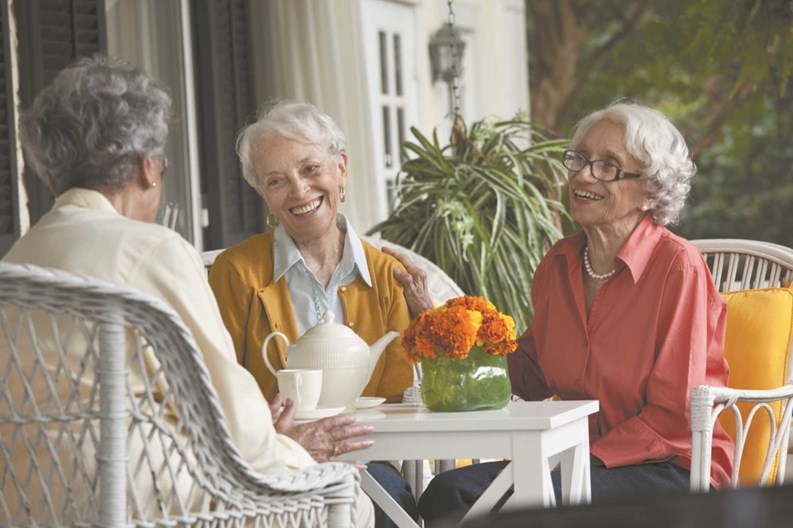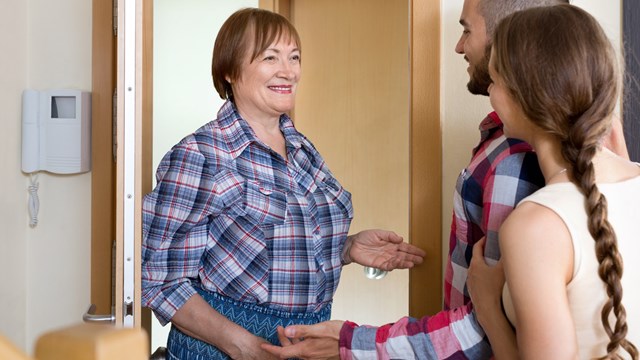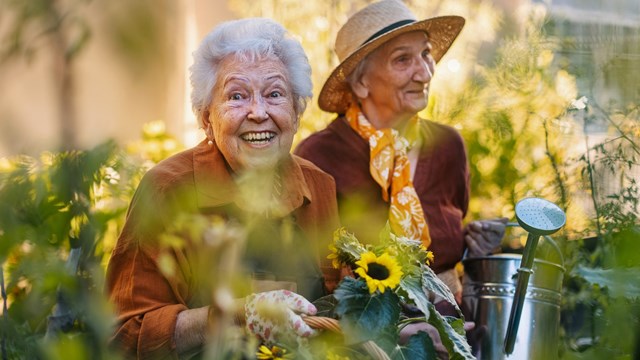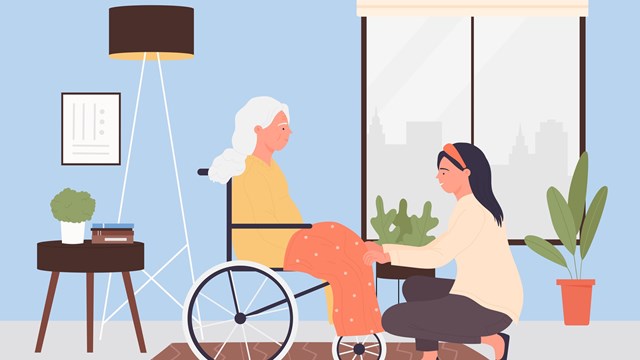Citizens over the age of 65 comprise nearly 13 percent of the U.S. population—just under 40 million seniors. By 2030, it is estimated that 72 million Americans will be over the age of 65, nearly doubling those numbers. Where this volume of seniors will live and how, is a question facing not only the individual seniors but also many boards and property managers who are seeing an increased population of older residents. It is to be expected that this group will dramatically change the face of aging and retirement.
Newer Trends for Older Residents
Data released in 2010 by the U.S Census Bureau, shows that 1,185,993 of New Jersey residents are over the age of 65. According to the New Jersey Department of Health and Senior Services, New Jersey is one of nine states with a senior population of more than 1 million and by 2030, the senior population will grow to 2.5 million.
Some of these aging Americans move into nursing homes or managed care facilities as their mobility and overall health begin to decline, but as people are living longer and healthier lives, they’re opting to stay in their homes longer—a process sometimes referred to as ‘Aging in Place.’ A 2010 AARP [American Association of Retired Persons] found that 90 percent of seniors want to remain in their homes.
“Seniors opting to age in place is about control and independence,” says Karen Alexander, the director of eldercare services at United Jewish Communities of MetroWest NJ in Whippany. “You’re in a familiar environment with the people and the things around you that you’ve known for a very long time, that’s very comfortable and it allows you to maintain a sense of control over your destiny. Nobody likes to move, it doesn’t matter whether you’re 85 or 45.”
It is generally agreed that aging in place, surrounded by community in a familiar environment is far preferable to moving into a less-stimulating, potentially more isolating nursing facility. The term ‘Naturally Occurring Retirement Communities,’ evolved from aging in place. A NORC is a demographic term used to describe a community, building, development that was not originally built for seniors, but that now has a sizable elderly population.
“The aging population will likely lead to a rapid increase in the number of NORCs in the coming years,” says John Migliaccio, Ph.D., and director of research for the MetLife Mature Market Institute in New York City.
According Dr. Emily Greenfield, an assistant professor of social work at Rutgers University’s Institute for Health, Health Care Policy and Aging Research, in New Brunswick, there are 12 publicly funded NORC SSP [Supportive Services Programs] in New Jersey.
“In general, the NORC SSP program model could involve actual changes to a community’s infrastructure or changing people’s home environment like the physical layout of it,” says Greenfield, “But they are far more focused on the social aspects, on enhancing older adult connection to other older adults in their community that might be needing an informal network of support that could help people in times of trouble.”
In A NORC program social workers, nurses, and residents work together to address the needs of seniors in a community. Wide ranging activities from yoga to indoor gardening to pizza and film evenings to walking clubs are provided. Its community-based intervention is designed to provide seniors with greater comfort and security in their own homes.
“Each community is different because a NORC program builds on the base of what existed in that community before we arrived,” says Alexander. “For example, we have a site coordinator in Verona who works out of the community center. The coordinator develops a monthly calendar of activities like wellness classes, health education programming, and coordinates home repair needs, provides employment assistance. A popular program we have in Caldwell is that one day a week we have a social worker who is available for folks who need help with information, referrals, entitlements or who needs to figure out Medicare or Social Security.
“A lot of older adults are not looking for initiating a relationship with a social worker or a nurse who can come to their home,” says Greenfield. “So what these programs do, in theory, is give older adults an opportunity to get to know a diverse range of helping professionals in a kind of community context so that when something does come up they know who to call and they know how to get that service.”
The Start of Something Bigger
The first NORC services program in the country officially opened on November 14, 1986 at the Penn South Co-op complex in Chelsea. The 10 building, 2,800 unit complex located between Eighth and Ninth Avenues and East 23rd and 29th streets, was built in 1962 by the International Ladies Garment Workers Union (ILGWU) and underwritten by the United Housing Federation (UHF). Designed as a social experiment to provide affordable housing for moderate-income workers, many of the original residents were union members, who once walked to work in the nearby garment center and chose to stay in New York after retirement. By the early 80s, around 70 percent of the shareholders in the complex were over 60.
Right around this time, Fredda Vladeck, a geriatric social worker at St. Vincent’s Hospital in Greenwich Village began to notice a lot of older adults coming into the emergency room with preventable admissions. Many lived at Penn South in nearby Chelsea. As Vladeck began to dig deeper, she discovered that many Penn South residents were former labor organizers, most who had never married and half of those who had married, did not have children, and the result was a population without conventional familial supports.
“At that point I went to the Board of Directors at Penn South and told them what we were seeing at the hospital and asked them what they thought would be helpful,” says Vladeck. “The board suggested a nurse or social worker on site but I challenged them to think bigger. I challenged them to think about what kind of community they wanted as this community grew older. And that was the genesis of it.”
Gray is Great
Alexander and Greenfield both consider a large population of older adults a positive influence on communities for a number of reasons.
“I think that one of the really important benefits is that it maintains the history and identity of the community,” says Alexander. “These are folks that have been there in many cases 30, 40 years. They have contributed to the community in that time raising their families and their children there. And now’s there’s an opportunity for mutual benefit which is a really great example to give to young and middle-aged people living in the community.”
Alexander cites security as another plus, since older adults are often home during the day, they recognize normal activity and are great on crime watch committees. “They can be the eyes on the street,” adds Alexander.
Greenfield echoes Alexander’s positive sentiments. “There’s this growing sense that older adults are kind of an untapped resource, “says Greenfield. “Especially the older adults who are generally healthy and have high levels of education, there’s a lot of potential for them to give their expertise and donate their resources. Older residents love to do volunteer work. That participation is associated with health benefits too, because it makes people feel better physically and mentally.”
Vladeck feels the best way to reach out to elderly residents to gauge their needs and wants is a quick survey. “A survey with no more than 10 questions could be enormously helpful,” says Vladeck. “The questions should be about their concerns and aspirations. I mean this seriously because if we only ask them about what their needs are, we’re still doing what I call a deficits-based approach, which is only helping the neediest rather than defining the kind of community more broadly.”
“We’ll do listening sessions with groups of older adults,” says Alexander “Normally these sessions will take place in a community center or senior center, we’ve also done them in apartment buildings and diners. If there’s an existing meeting that generates a lot of seniors we’ll piggyback on that meeting. If you’ve lived in a community for 30, 40 years you probably have some pretty good ideas about what would make it a better place in which to grow older and we listen. Then, we’ll organize their answers around categories like transportation, housing, access to food, socialization, recreation, wellness and exercise.”
Senior-Friendly Renovations
Renovating a living space to make it more senior-friendly will vary by building or housing development but special attention should be paid to handrails, ramps, increased signage and lighting or anything presenting a trip hazard.
“I’ve received a lot of feedback from older adults living in various kinds of housing developments and the most common concern they have is sturdy grab-bars in the shower stalls,” says Vladeck. “The stairs and hallways should also be well-lit and the security system or buzzer system should work well.”
“There’s a lot of basic stuff like making sure clutter is removed,” says Alexander, “That tripping hazards are removed like wires, or rugs that are not tagged down, putting in the adhesive decals in showers and tubs so they’re not slippery. Many of these things are not super-expensive. They are something a handyman or a son-in-law or a daughter-in-law could do,” she says.
In addition, Vladeck, Greenfield and Alexander all believe that it is important to ask seniors what their wants and needs are, and what would make their lives easier and safer and allow them to age in place with grace and dignity.
An increasing population of older residents benefits any community in numerous ways. Through open communication, boards and management companies can create a safe, stimulating and interactive community that not only houses but also engages older residents for many years to come.
Anne Childers is a freelance writer and a frequent contributor to The New Jersey Cooperator. Editorial Assistant Christy Smith-Sloman contributed to this article.







Leave a Comment